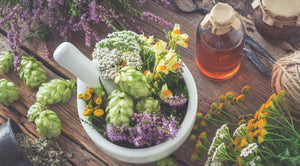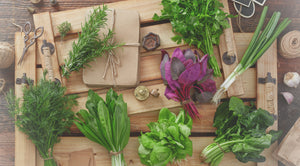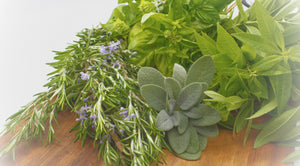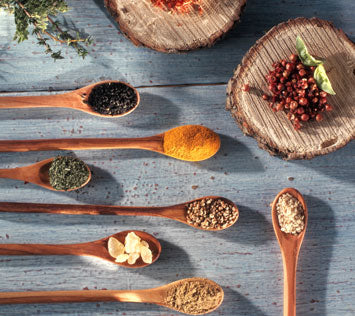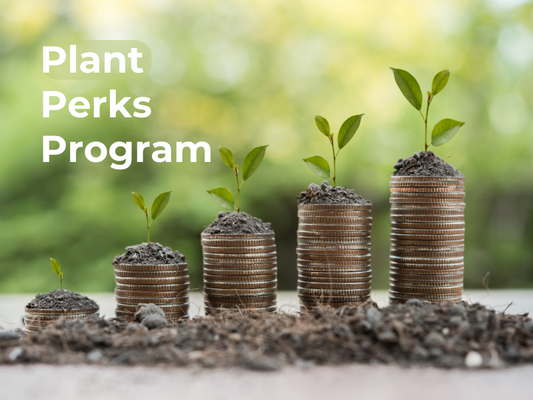Hints For Healthy Indoor Herbs
Here are some general rules of thumb and just plain good advice for keeping happy, healthy herb plants indoors.
Lighting
We don’t think much about the amount of light outside as it changes from season to season, when we’re indoors and warm with electric lights, but this is a major factor for your plants. You need to make sure your plants are getting the amount they need.
Watering

If you’re feeling dried out from running your heat on high, chances are that your plants may be, too. Make sure to water them appropriately. Excluding cacti and other succulents, an easy way to tell if your plant needs water is to stick your finger partially into the dirt to test it. If it’s bone dry, don’t drown it. Water moderately and monitor its progress. If you find that your plants are needing water at alarming rates, check to see where you have them placed. On top of a radiator or next to your fireplace may be too hot for their liking.
Temperature
You’ve moved your little green friends indoors and you figure that should keep them safe from the temperatures, right? Think again. Some plants can be highly sensitive to heat and cold so make sure you aren’t placing your Basil plant near a cold, drafty vent or your Lemongrass right beside your wood furnace.  Depending on their particular needs, temperature can even speed and slow the growth process for your plants, just like an artificial changing of the seasons. For example, with Amaryllises, because they are flowering bulbs, temperature plays a huge part in their growth cycle.
Depending on their particular needs, temperature can even speed and slow the growth process for your plants, just like an artificial changing of the seasons. For example, with Amaryllises, because they are flowering bulbs, temperature plays a huge part in their growth cycle.
Cleaning and Prevention

Another great thing about having your plants close at hand, is that you can’t help but to notice them. Dust and microscopic debris build up on the plant’s leaves which can block sunlight and the plant’s pores. Try cleaning the tops and bottoms of your plant’s leaves with a damp cloth to remove any unwanted buildup that may be hindering your plant from being its healthiest. While you’re at it, take a close look for insects and disease. For a longer lasting plant, it’s best to nip an infestation or blight in the bud. In most cases, warm water and a mild soap will do the trick to remove many common pests. For a deeper rooted problem, try an all natural pesticide or fungicide, which can be bought at your local hardware store.
Positioning
Plants prefer a routine and moving them into your home can be quite an adjustment. To alleviate further disruption to their transition indoors, try to find permanent spots for them when you bring them in. If you can place them in areas where they won’t be disturbed by the hustle and bustle of daily life, pets, kids or just because they’re in the way. Moving potted plants too often can really disrupt and unsettle their soil and root structure.

Leaving them to settle in and stay sedentary will cause the least amount of stress on them, as leaves, stems, flowers and branches can break, become weak or tear during the moving process. This will also allow the roots to stay strongly grounded, as soil won’t be jostled about, loosening the plant’s hold.
Potting
Making sure your plants are in the best pot or container is also crucial to its health. Think about it. When you start to outgrow your shoes, the constriction and tightness is uncomfortable, right? Well, many plants need to be moved to larger containers as they get bigger to give them more adequate space to stretch and grow bigger. Winter is a great time for this as the cool temperatures make the process less stressful on your plants. Give your plants plenty of room to grow and you’ll get to enjoy larger and longer lasting results.

Gardening year round allows you to enjoy the fruits of your hard work constantly and the calming presence of your indoor plants will bring beauty and fresh aroma to these bleak winter days. Many plants can be easily started indoors during the colder months, for transplant in the spring to an outdoor garden. Try growing your favorite culinary herbs indoors this season to spice things up in your stews and other hearty recipes or just to lend a savory fragrance to your home.

